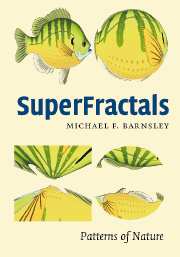4 - Hyperbolic IFSs, attractors and fractal tops
Published online by Cambridge University Press: 05 February 2014
Summary
Introduction
In this chapter we introduce the newly discovered and very exciting subject of fractal tops. Fractal tops are simple to understand yet profound and lead at once to many potential applications. What is a fractal top? It is an addressing function for the set attractor of an IFS such that each point on the attractor has a unique address, even in the overlapping case! Fractal tops can be used to do the following things: (i) define pictures that are invariant under IFSs, in much the same way that the measure attractor and the set attractor are invariant; (ii) define transformations between different fractal sets; (iii) set up a uniquely defined dynamical system associated with any IFS and use the invariants of this dynamical system to define invariants for pictures; (iv) establish, in if-and-only-if fashion, when pairs of fractal sets are homeomorphic, see Figures 4.1 and 4.2; (v) produce beautiful special effects on still and video images, with diverse potential applications in image science; (vi) lead to an easily used wide-ranging definition of what a deterministic fractal is; (vii) handle topologically fractal sets in a manner that has serious analogies with the way in which cartesian coordinates can be used to handle classical geometry. A fractal top is illustrated in Figures 4.16 and 4.17, for example.
We begin by defining a hyperbolic IFS, its set attractor and its measure attractor. We then provide a simple way of writing down IFSs of projective and Möbius transformations, just to make it easy to tell one another which IFS we are talking about. We then discuss the chaos game algorithm and deterministic algorithms for computing set attractors and measure attractors. We also explain and illustrate the collage theorem, which is a useful tool for geometrical modelling using IFSs. At this stage we can contain ourselves no longer: we introduce fractal tops and explain how they can be used to colour-render fantastic pictures, which we say are produced by tops plus colour-stealing.
- Type
- Chapter
- Information
- SuperFractals , pp. 313 - 384Publisher: Cambridge University PressPrint publication year: 2006



